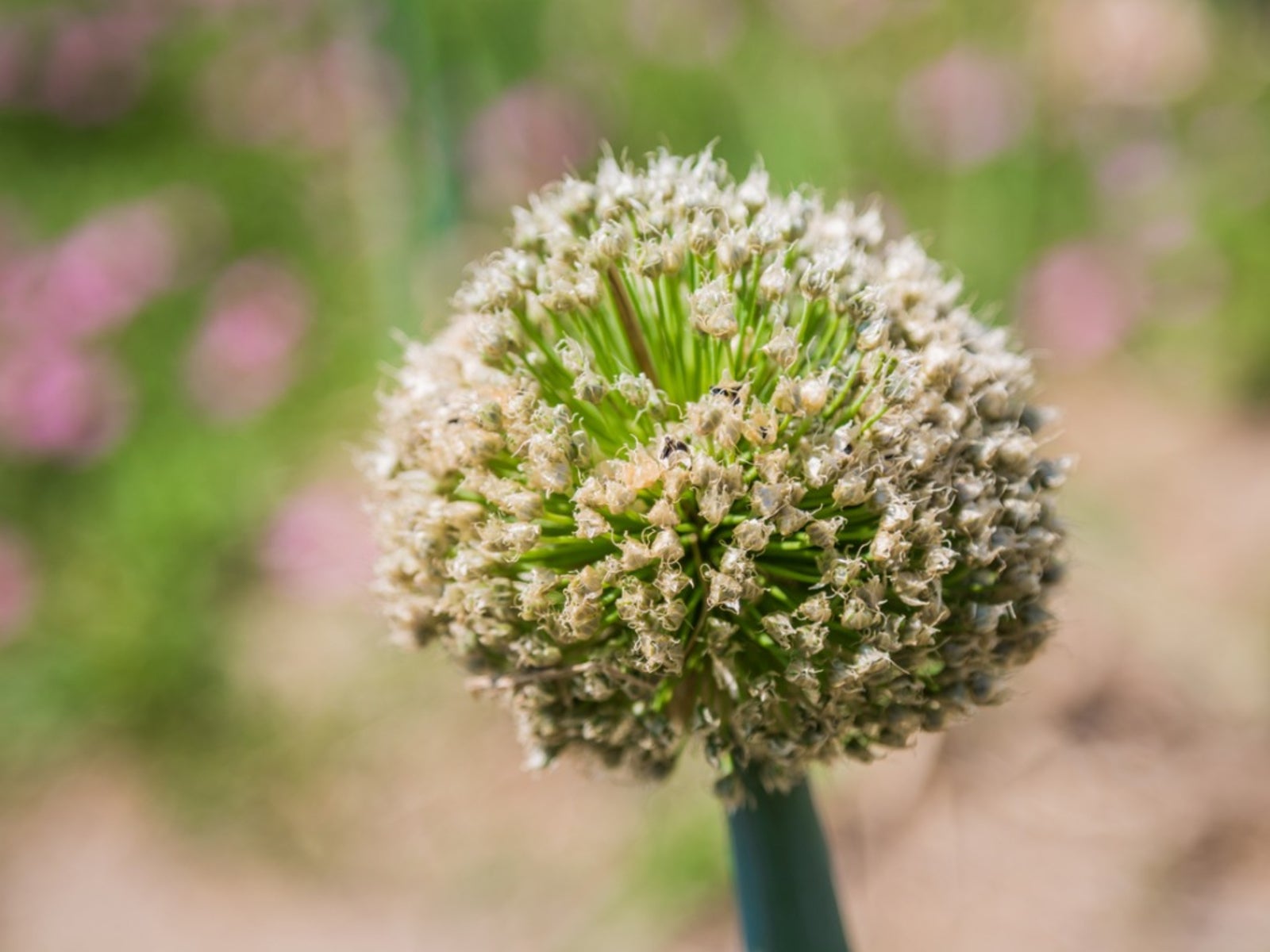Collecting Onion Seeds: How To Harvest Onion Seeds


There's nothing like the flavor of an onion fresh from the garden. Whether it's the narrow green ones in your salad or the fat juicy slice on your burger, onions straight from the garden are something to behold. When they find that special variety that is particularly appealing, many gardeners want to know how to collect onion seeds for future sowing. Harvesting onion seeds is a fairly simple process, but here are a few things you need to know. Whether it's a preference for organically grown produce, economic considerations, or just the good feeling you get from serving food you've grown yourself, there's a renewed interest in home gardening. People are searching the net for the richness and flavor of old time varieties and learning about saving seed for the next garden generation. Collecting onion seeds for future production can be your contribution to the process.
Collecting Onion Seeds from the Right Plants
Before we talk about how to harvest onion seeds, we need to say a few words about what kind of onions you can harvest onion seed from. Many of the seeds or sets acquired from large seed production companies are hybrids, which means the seeds are a cross between two parent varieties chosen for specific characteristics. When blended together, they give us the best of both varieties. That's great, but if you're planning to harvest onion seed from these hybrids, there's a catch. The saved seeds will most likely produce onion with the traits of one parent or the other, but not both, and that's if they germinate at all. So, rule number one: Don't harvest onion seeds from hybrids. The next thing you need to know about collecting onion seed is that onions are biennial. Biennials only bloom and produce seed during their second year. Depending on where you live, this may add a few steps to your list of steps. If your ground freezes during the winter, a how to collect onion seeds list will include pulling the bulbs you have chosen for seed from the ground and storing them over the winter to be replanted again in the spring. They'll need to be kept cool at 45 to 55 degrees F. (7-13 C.). This isn't just for storage purposes; it's a process called vernalization. The bulb needs cold storage for at least four weeks to trigger the growth of scapes or stalks. Replant your bulbs in early spring when the ground has warmed to 55 degrees F. (13 C.). After leaf growth is complete, each plant will send up one or more stalks for flowering. Like all allium species, onions produce balls covered with tiny flowers ready for pollination. Self-pollination is usual, but cross pollination can occur and in some cases should be encouraged.
How to Harvest Onion Seeds
You'll know it's time for harvesting onion seeds when the umbrels or flowering heads begin turning brown. Carefully clip the stalks a few inches (8 cm.) below the head and place them in a paper bag. Set the bag in a cool, dry place for several weeks. When the heads are completely dry, shake them vigorously within the bag to release the seeds. Keep your seeds cool and dry through the winter.
Gardening tips, videos, info and more delivered right to your inbox!
Sign up for the Gardening Know How newsletter today and receive a free copy of our e-book "How to Grow Delicious Tomatoes".

Jackie Rhoades began writing for Gardening Know How in 2010.
-
 Looking For Plants To Give You The Soft And Fuzzies? Try These 5 Fuzzy Leaf Plant Options
Looking For Plants To Give You The Soft And Fuzzies? Try These 5 Fuzzy Leaf Plant OptionsLovers of texture, drama, silver foliage and tactile plants will adore these special sensory garden additions. These fuzzy leaf plant options will leave you all aglow
By Susan Albert
-
 Get Ready For A Summer Of Hummers! Grow These Full Sun Hummingbird Plants and Flowers
Get Ready For A Summer Of Hummers! Grow These Full Sun Hummingbird Plants and FlowersIf you’re lucky enough to enjoy a sunny backyard, make sure you are maxing out on your pollinator opportunities and grow these full sun hummingbird plants and flowers
By Tonya Barnett